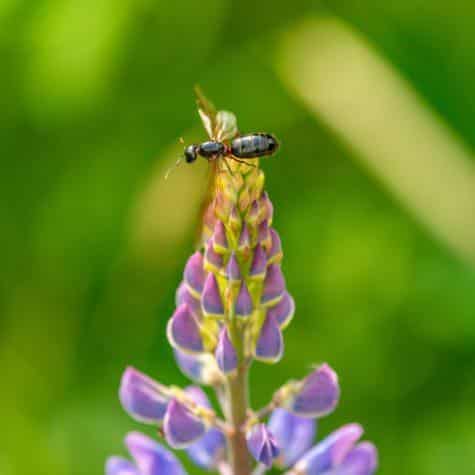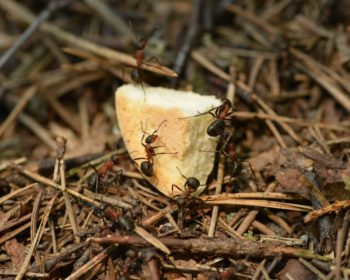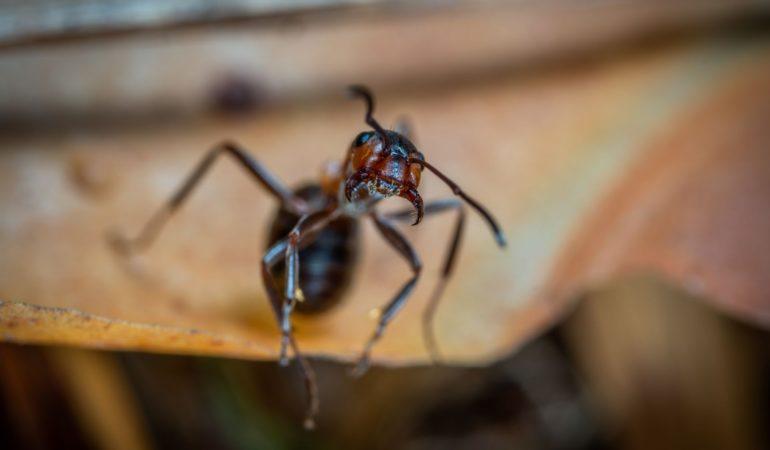Seeing ant activity in your home or noticing sawdust-like debris below your windows or baseboards? You may be dealing with carpenter ants. Among its ant characteristics is that Carpenter ants are known to chew and tunnel their way into any moist or rotting wood. In this post, we will outline several tell-tale signs of carpenter ants in house that will help you determine if you are dealing with carpenter ants in your home.
It’s important to keep an eye out for small holes on any wood surfaces, which is a giveaway that you have some insect invaders. Through the tunneling process, carpenter ants will expel debris outside of these holes leaving behind signs of carpenter ants in house activity. This is just one of the key differences between carpenter ants and termites, as termites will consume the cellulose in the wood rather than discarding it. Some people will report hearing a scratching or gnawing sound within the walls as the ants work to expand their nest. An interesting ant characteristic is that the appearance of winged ants inside your home could also be signs of carpenter ants in house infestation.
Homeowners often wonder about the lifespan of an ant, especially when trying to determine how long a hidden infestation may have been active.

When trying to identify if the ants you are seeing are in fact carpenter ants, there are a few key features to look out for. Typically larger in size, they range from ½” to ⅝” in length. Carpenter ants are commonly black in color but can also be a mix of black and red, or entirely black, red, or brown. Although they can differ in size and color, the body of a carpenter ant is consistently made up of an evenly rounded thorax connected to the abdomen by a singular pointed node.
Requiring a constant water source to survive, carpenter ants will be drawn to your home by any wet or molding wood alongside the building. Although they typically start here, they can later begin tunneling into dry or undamaged wood as they expand their territory into the home. Other ways these signs of carpenter ants in house can gain entry are through cracks and crevices or any slight openings around the doors and windows of the home.
Once inside, they can be drawn to feed on sweets, meats, cakes and grease. So any food spills should be cleaned up promptly to help minimize possible food sources. As the temperature decreases entering the winter months, carpenter ants will seek out a warm, protected area to hunker down for the winter. They have been known to nest inside the walls of the home while they begin hibernation and enter into a dormant state.

As the spring sets in and temperatures are maintained above 50 degrees you may notice a sudden flurry of ants rushing to find food as they come out of hibernation. While you may not have seen them before, this sudden rise in signs of carpenter ants in house activity doesn’t always mean they are new to your home. Ants commonly nest indoors throughout the colder winter months so it is possible that they have been present longer than you are aware.
Typically winged males will be seen exiting hibernation first as the temperature rises and daylight increases signaling it is time for them to swarm. Appearance of these winged males inside can be an indicator that you have been dealing with an infestation longer than two years. As colonies mature after about three to five years, they begin producing winged alates, or reproductive swarmers. Unlike termites, these swarmers are only produced in the warm spring months. They will attempt to break off and establish a new colony.
A common question we get is how long do ants live—and in the case of carpenter ants, the answer can help explain why colonies become so firmly established before detection.

Although carpenter ants do not eat wood, their nesting techniques can be just as harmful. Beginning with exposed wood that is wet or moldy, they will expand their tunnel system, called galleries, into any neighboring wood areas. Signs of carpenter ants in house—such as sawdust piles—can indicate significant structural damage when a nest is built within the wood framework of a home. As an established colony can exceed 2,000 insects, they will cause more and more damage the longer they are left untreated.
As mentioned earlier, carpenter ants require a reliable source of water in order to survive. That means it is very important to eliminate any sources of moisture or standing water around your home. Storing all firewood and building materials away from the home is helpful as well, since carpenter ants like to build nests into exposed wood. Additionally, it is important to keep any branches or tree limbs cut back away from your home. Carpenter ants can gain entrance to the building by crawling along any branches or tree limbs resting against the home and entering through small openings.
Use a silicone-based caulk to seal any cracks or openings around doors and windows where the signs of carpenter ants in house might be letting ants in. If activity continues, it is always best to contact a professional. Trained and licensed pest management technicians at Richland can assess the situation and recommend a plan of action to get the problem handled.

Richland Pest & Bee Control is a family-owned pest management company serving Connecticut and Western Massachusetts for over 40 years. Known for their expertise and 5-star customer service, they offer reliable solutions for stinging insects, rodents, and other pests, ensuring homes and businesses stay pest-free.